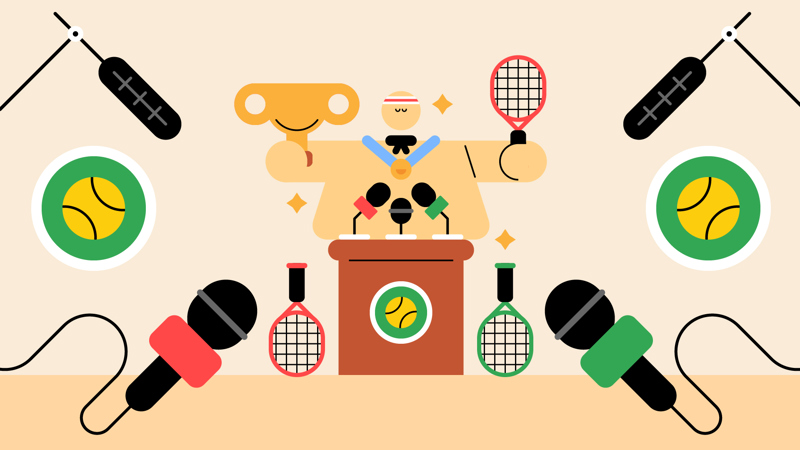
Fan-tastic interview
You’ll need
- Tables
- Chairs
- Pretend microphones (such as cardboard tubes or cups)
Before you begin
- At least one person will need to be near the end of their three months of following a sport.
- If there are enthusiasts from more than one sport you could run the activity more than once, split into smaller groups, or divide the questions up so the sports are all discussed (and even compared) by a panel.
- Set up the room to look like a press conference – put chairs in rows, and table at the front with chairs behind it. Set up pretend microphones on the table; you could use cardboard tubes, cups, or even balls on the end of pencils.
Prepare to be interviewed
- The interviewees should gather everything they know about their sport, including the main rules, information about famous teams and/or personalities, the equipment people need, major events for the sport, and how they follow the sport.
- The interviewees should think about the kinds of questions they think the reporters will ask, and think about how they might answer.
The interview
- The interviewees (sports enthusiasts) should sit behind the table that’s covered in microphones. They should act as a spokesperson for their sport.
- The reporters should sit on the rows of chairs.
- The reporters should take it in turns to ask questions about the enthusiasts’ sport(s). The person leading the activity might give them some example questions, such as ‘who do you think is the most important player right now?’ or ‘how do you win the sport?’, but they should also think of their own questions (and think of more questions as they listen to the enthusiasts’ answers).
- Once the reporters have asked all of their questions, they should give the enthusiasts a big round of applause. Speaking to a room full of reporters is a brave thing to do!
Reflection
This activity needed everyone to communicate. How did the reporters make sure their questions were easy to understand? How did the interviewees remember all of the facts? How did the interviewees explain things? When else might people need to remember lots of information?
This activity also gave you a chance to be confident. Was it a challenge to ask questions in front of everyone, or present information? If it was, you should be really proud of yourself for giving it a go – talking in front of people can feel scary. Are you a good communicator? Are you improving your communication skills? What did you do well in this activity?
Safety
All activities must be safely managed. You must complete a thorough risk assessment and take appropriate steps to reduce risk. Use the safety checklist to help you plan and risk assess your activity. Always get approval for the activity, and have suitable supervision and an InTouch process.
If anyone doesn’t want to speak on their own, they could pair up with another enthusiast in the same sport, or they could ask a friend to help them and brief them on some of the information first. Some people might want to work with a small group of reporters, or be interviewed one on one, and others might want to record or write their answers instead – these different ways of communicating are all OK.
All Scout activities should be inclusive and accessible.
People could turn this into a report as part of their Communicator Activity Badge.
The interviewees should share information they think is important, as well as just answering the questions. The press conference should belong to the young people – they can change the format as much as they like.
